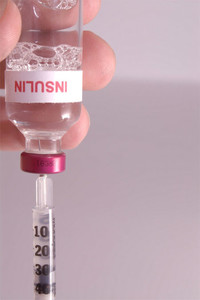Insulin analogue patent expiry is likely to mean that biosimilars will be submitted for licensing. In light of this, Heinemann and co-authors reviewed regulatory requirements for biosimilars, notably insulin, in several regions and countries [1].
Healthcare providers increasingly interact across geographical boundaries, and people with diabetes have similar needs for medication efficacy and safety.
As of August 2014, general biosimilar and insulin-specific guidelines were available in 34 countries and two regulatory domains, respectively. In 2009, the World Health Organization issued guidelines for the evaluation of biosimilars, but not insulin specifically. The International Conference on Harmonisation of Technical Requirements for Registration of Pharmaceuticals for Human Use (ICH), which provides a consistent set of standards, has not published guidelines for biosimilars/biosimilar insulins.
Many national guidelines are clearly related to/derived from the general and insulin-specific European Medicines Agency (EMA) guidelines. The US Food and Drug Administration (FDA) issued three draft guidance documents on the development of biosimilars in February 2012. Currently, FDA regulates several biologicals, including insulins, as chemical drugs. However, certain ‘biological products’ such as insulins will be licensed as ‘biologicals’ from 2020.
All identified guidelines provide some guidance for selection of the reference product, physicochemical characterization compared with the reference product, requirements for in vitro and preclinical studies, comparative human pharmacokinetic (PK), pharmacodynamic (PD) and clinical studies (addressing efficacy, tolerability, safety and immunogenicity), risk management and pharmacovigilance plans, interchangeability and substitution, and extrapolation of indication, with differences in emphasis.
Guidelines specific to biosimilar insulins have been issued by EMA and Saudi Arabia. The EMA insulin-specific guidelines include detailed criteria on PK/PD studies. However, the suggested confidence intervals for bioequivalence appear rather wide for clinical reliability (80–125% for PK), where small changes in dose impact glycaemic control and hypoglycaemia. Another potential concern is detection of rare or uncommon adverse events with current pharmacovigilance systems and traceability of new adverse events if there is prescription by non-proprietary (scientific) name.
The lack of a common worldwide standard reporting infrastructure can create difficulty in detecting or consolidating patterns of safety findings, or determining whether adverse events identified for one biosimilar are necessarily applicable to other biosimilars or the reference product. Guidelines cannot easily address or monitor manufacturing consistency over time (batch-to-batch variability, impurity patterns), which could contribute to immunogenicity.
In conclusion, from a global perspective, this area of drug regulation is heterogeneous and evolving, and the authors call for an initiative aimed at harmonizing the requirements for biosimilar insulins.
Conflict of interest
Several of the authors of the research paper [1] reported conflicts of interest, including having received funding from companies manufacturing insulin or developing novel insulins, as well as from manufacturers of potential biosimilar products. For more details, see [1].
Abstract provided by Dr Lutz Heinemann, Science & Co, Düsseldorf, Germany.
Reference
1. Heinemann L, Khatami H, McKinnon R, Home P. Diabetes Technol Ther. 2015 Mar 19. [Epub ahead of print]
Permission granted to reproduce for personal and non-commercial use only. All other reproduction, copy or reprinting of all or part of any ‘Content’ found on this website is strictly prohibited without the prior consent of the publisher. Contact the publisher to obtain permission before redistributing.
Copyright – Unless otherwise stated all contents of this website are © 2015 Pro Pharma Communications International. All Rights Reserved.








 0
0











Post your comment